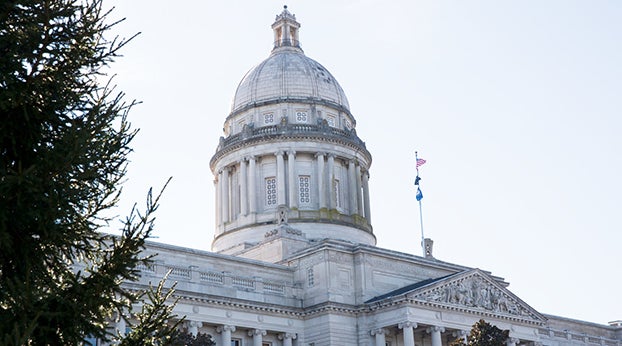‘Slave economy’ is why South couldn’t hope to win Civil War
Published 4:28 pm Tuesday, January 29, 2019
By BOB MARTIN
Contributing columnist
Frederick Law Olmsted was a renowned landscape architect in the 1800s. He designed Central Park in New York City, the Biltmore Estate in North Carolina and a network of parks in Louisville. He also did landscape work for numerous well-known universities. Olmsted was born April 26, 1822, and died August 28, 1908.
As if a prolific career in architecture was not enough, Olmsted was a precocious public intellectual and an abolitionist when it really mattered to be an abolitionist. He was nothing at all like John Brown, however. Indeed, his understanding of the economics of slavery was startling. His economics and his intuition were spot on for the problem of the generation.
I just finished his book titled, “A Journey through Texas: Or a Saddle Trip on the Southwest Frontier,” published in 1856. It is a first-person narrative of his trip, observations, analyses and emotions. As such, it is quite valuable in its historical context and most revealing about slavery.
Olmsted notes that wherever he travelled in the South, slavery was accompanied by extreme poverty among the whites. There was no white middle class, and only a small number of elites lived in ostentatious luxury. From these observations, he draws all the right conclusions.
Since the South had no middle class composed of prosperous mechanics, engineers and shopkeepers, it had very little true industry. Without that industry, the South could not produce enough war material to win a prolonged conflict with the North and was susceptible to blockade.
Since the poor white citizens in the South had no stake and no prospect of one, it is a mystery why the elites assumed they would fight for the South. Without those soldiers, a war with the North was madness. The surprise is they did fight. How did that happen? Were my great grandfather and his brothers just stupid? If the North knew anything about “psyops” they could have shortened the war considerably.
Another thing: The South had no public infrastructure (public schools, a public road system or modern railroad network). This was a major handicap for prosecuting a war with the North.
The cotton market and cotton as a crop were also problems for the South’s economy. Competition required plantations to produce cotton each year and the scale economies forced each producer to expand their acreage each year.
Without crop rotation, soil productivity declined steadily. Increased acreage required more slaves. The compulsion to grow absorbed whatever capital was earned by cotton each year, so little was left for investment in consumer products; hence, the chronic poverty. This scenario could only be sustained if additional cheap land was available for cotton cultivation. Therefore, for the South, it was imperative the frontier be open for additional slave states. The elites in the South were sitting on a powder keg of poor white discontent looking for economic opportunity. For the South, new frontier slave states were an existential necessity.
The failure rate among small scale planters was very high, which tended to waste what capital could be accumulated. During Olmsted’s saddle trip across Texas, he was shocked by the number of abandoned small plantations.
The wage rate earned by white underclass workers was anchored by the wage rate paid for slaves leased by slave owners. In the language of contemporary economics: a slave economy has profound negative externalities for the host community. The macroeconomic characteristics of slavery had negative implications for both the slaves and the would-be slavers, although a small subset of elite slavers had disproportionate political power and wealth. Slavery is not capitalism. True, people are bought and sold, but that violates a fundamental principle of capitalism: Each party must be free to contract with the others.
It was madness for the South to go to war with the North. The results were disastrous for the South and the country as well. It could not have been a rational decision. It is an object lesson that emotional decisions about momentous questions will produce such results.
The disastrous economics of slavery has implications for open borders globalists. Unequal distributions of income make people nervous, despite my tribe’s explanation that unequal income is the natural outcome of efficient markets. Under normal circumstances this is correct; but there are extreme forms where unequal income distribution is pathological.
Conceptually, a slave economy is the extreme, or limiting, version of income inequality. Hence, the unequal distribution of income between slavers and slaves is the limiting worst case of unequal income. If our probability of being either slaves, rich slavers, or poor non-slaves is the same as the proportions of each that existed in the South, no one would voluntarily choose to live in such a society. The slave economy explains why we “know” something is wrong with an extremely unequal distribution of income.
It takes a liberal Western society to sustain a prosperous middle class. If that society also harbors an efficient capitalist society, it will produce rising prosperity for its citizens, and its exports/imports will share that prosperity with the rest of the world. On the other hand, if open border globalists succeed, the average incomes of citizens in the U.S. and Europe will fall to the average global benchmark and the “golden goose” will be dead, but the globalists will be even wealthier than before.
Bob Martin is the Emeritus Boles Professor of Economics at Centre College.
Editor’s note: This column has been corrected to reflect the correct spelling of Frederick Law Olmsted.






